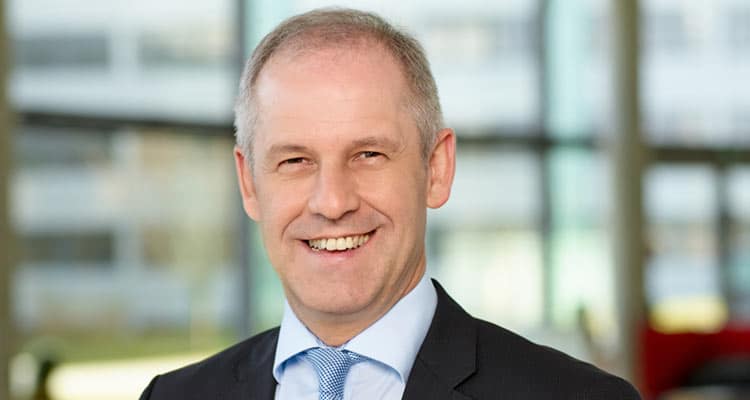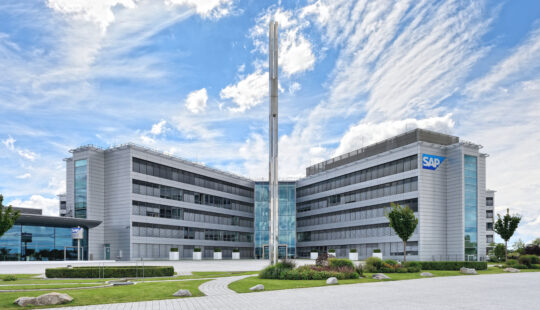In January, Adaire Fox-Martin, member of the Executive Board of SAP SE and head of Customer First, announced the creation of the Industries and Customer Advisory Group and named Peter Maier as president.
 Here, Maier discusses the response to COVID-19 and explains changes to the way SAP’s new field unit, Customer Success, engages with customers.
Here, Maier discusses the response to COVID-19 and explains changes to the way SAP’s new field unit, Customer Success, engages with customers.
Q: Your team is currently on the front lines of serving customers during COVID-19. What is your focus right now?
A: Our focus is squarely on protecting our employees while at the same time supporting our customers to keep their operations and supply chains running. Some industries will be impacted more than others, such as hospitality, automotive, airlines, oil and gas. If I project where this is heading — and we have already heard from customers on this — the whole topic of how to manage supply chains will be changing in a big way. Companies will want much better visibility into their supply chains and therefore analytics will play an important role.
Companies heavily dependent on supply chains want to have transparency on their dependencies. Take, for example, the manufacture of vehicles or medication: If your supply chain doesn’t have the resilience needed in a crisis, you have real problems. The industries impacted most are those that have highly optimized, long and complex supply chains — for example retail, automotive, and consumer products. Companies have built a highly material- and time-optimized supply chains, but these supply chains are also extremely vulnerable to interruptions.
How are we engaging with customers during the crisis?
A crisis always creates opportunities, and our customers are aware of that. At the same time, customers need our advice now more than ever. Therefore, the more in touch we are with our customers and the closer we listen to them to understand their current issues, the better we are going to be able to serve them in responding to the crisis and rebounding out of it.
Why was unifying the Industries, Presales, and Customer Advisory areas and moving them closer to the field so critical for SAP and customers?
There are two very important roles at SAP: the employees who develop our solutions and those who sell them. My organization connects these two roles. The objective is to ensure essential customer experiences and needs are fed back into the development process so we build the right solutions — and better solutions — for the customer.
We support the regions and the partners. Based on our deep understanding of a customer’s industry, we offer advice. This means giving the customers very clear guidance and a road map for when to use which solution. We also need to be able to demo solutions, share best practices, and explain the value customers can expect from using SAP solutions. For example, we are now able to bring the demo teams much closer to the teams that build the products so we will have demos much earlier to show and validate the products. This helps development teams to better understand what is resonating in the market and what is not.
It is very important to me that the strategy is developed hand-in-hand with the regions and adapted to regional requirements. A one-size-fits-all approach just doesn’t work.
What are the customers saying about their pain points?
From a product point of view, it is integration because this is absolutely vital to our customers and they have confirmed this to us again and again. Customer First is more than just a mantra. If we fix the integration and if we fix the relevance of SAP in an industry context and we deliver what we promise, that will improve the customer experience and the net promoter score will go up. I believe we are addressing this topic with the right sense of urgency.
Our customers want to see tangible outcomes from using our products, so it is much more important today and in the future to articulate the value of our solutions.
And finally, companies want to talk to us about their core business processes, where they make money today, and what they are planning for the future. We need to make SAP relevant in the discussion around our customers’ core processes. And to do that, we need to speak their industry language.
SAP is very well positioned and staffed in Europe and the Americas. How are you supporting Asia-Pacific Japan (APJ) region to gain more traction?
At least before the current crisis, Asia’s gross domestic product (GDP) has been growing fast and is expected to match and even exceed the GDP of the rest of the world. We are currently preparing for this shift to the East. This year, for example, we started an incubation model, bringing in experienced employees from selected markets into APJ to support in ramping up our sales teams there. The aim is to balance our capabilities worldwide.



